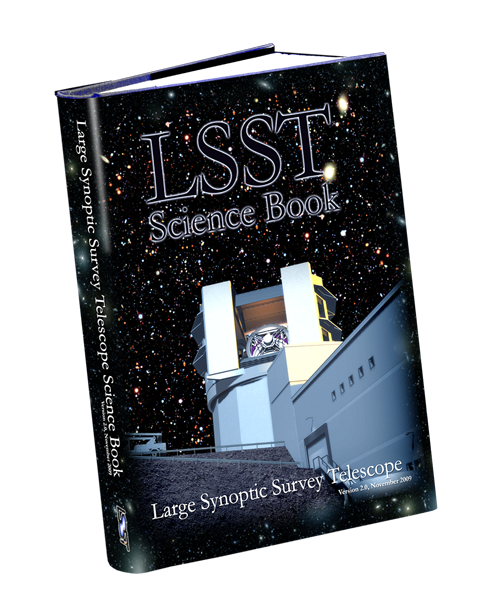- About
- Calendar
- Gallery
- Explore
- News
- For Media
-
For Scientists
- Science Collaborations
- Support for Science
- Community Forum
- Early Science
- Survey Strategy
- Alert Brokers
- Data Preview 0
- Users Committee
- Community Science team
- Citizen Science
- Glossary & Acronyms
- FAQ
- Codes of Conduct
- Working Groups, Boards, Committees
- International Data Rights Holder List
- In-Kind Program
- Citing Rubin Obs.
- Education


 A survey that can cover the sky in optical bands over wide fields to faint magnitudes with a fast cadence will enable many of the exciting science opportunities of the next decade. The Large Synoptic Survey Telescope (LSST) will have an effective aperture of 6.7 meters and an imaging camera with field of view of 9.6 square degrees, and will be devoted to a ten-year imaging survey over 20,000 square degrees south of +15 deg. Each pointing will be imaged 2000 times with fifteen second exposures in six broad bands from 0.35 to 1.1 microns, to a total point-source depth of r~27.5. The LSST Science Book describes the basic parameters of the LSST hardware, software, and observing plans. The book discusses educational and outreach opportunities, then goes on to describe a broad range of science that LSST will revolutionize: mapping the inner and outer Solar System, stellar populations in the Milky Way and nearby galaxies, the structure of the Milky Way disk and halo and other objects in the Local Volume, transient and variable objects both at low and high redshift, and the properties of normal and active galaxies at low and high redshift. It then turns to far-field cosmological topics, exploring properties of supernovae to z~1, strong and weak lensing, the large-scale distribution of galaxies and baryon oscillations, and how these different probes may be combined to constrain cosmological models and the physics of dark energy.
A survey that can cover the sky in optical bands over wide fields to faint magnitudes with a fast cadence will enable many of the exciting science opportunities of the next decade. The Large Synoptic Survey Telescope (LSST) will have an effective aperture of 6.7 meters and an imaging camera with field of view of 9.6 square degrees, and will be devoted to a ten-year imaging survey over 20,000 square degrees south of +15 deg. Each pointing will be imaged 2000 times with fifteen second exposures in six broad bands from 0.35 to 1.1 microns, to a total point-source depth of r~27.5. The LSST Science Book describes the basic parameters of the LSST hardware, software, and observing plans. The book discusses educational and outreach opportunities, then goes on to describe a broad range of science that LSST will revolutionize: mapping the inner and outer Solar System, stellar populations in the Milky Way and nearby galaxies, the structure of the Milky Way disk and halo and other objects in the Local Volume, transient and variable objects both at low and high redshift, and the properties of normal and active galaxies at low and high redshift. It then turns to far-field cosmological topics, exploring properties of supernovae to z~1, strong and weak lensing, the large-scale distribution of galaxies and baryon oscillations, and how these different probes may be combined to constrain cosmological models and the physics of dark energy.